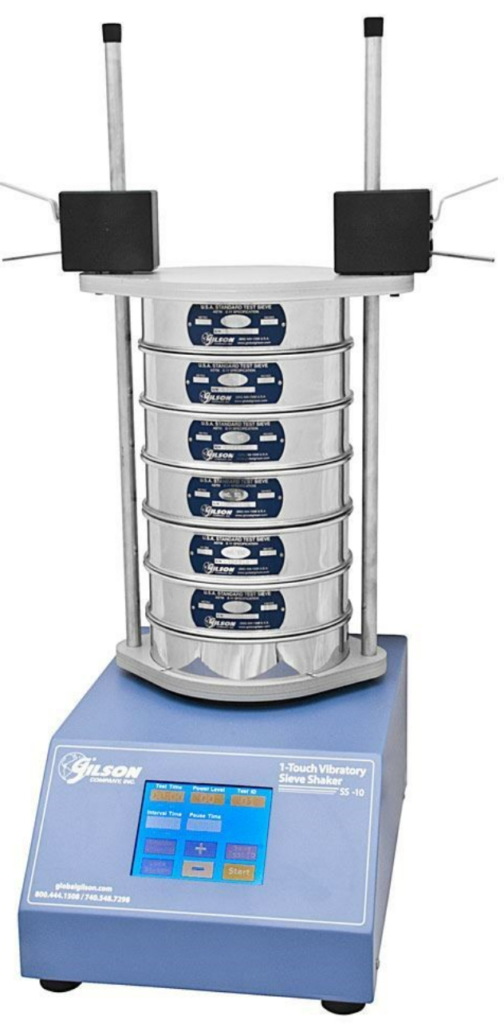Principles:
A sieve shaker is a mechanical device that uses vibration to assist in the separation of particles based on their size. The basic principles include:
1. Vibration Mechanism: Sieve shakers employ a motor-driven mechanism that imparts both vertical and horizontal vibrations to the sieve stack. This facilitates the movement of particles through the sieve openings.
2. Particle Separation: The vibrations cause particles to move vertically, allowing smaller particles to pass through the openings of the sieve, while larger particles are retained on the sieve surface.
Construction:

1. Motor and Drive Mechanism:
– Sieve shakers are equipped with an electric motor that drives the vibration mechanism.
– The drive mechanism may include an eccentric weight or a cam to generate the required vibrations.
2. Sieve Stack:
– Consists of a series of nested sieves with varying mesh sizes.
– Sieves are often made of stainless steel or brass and conform to specific standards.
– The stack is placed on the shaker platform, allowing particles to pass through the openings.
3. Shaker Platform:
– The platform provides support for the sieve stack and is designed to withstand the vibrations generated by the motor.
4. Controls:
– Sieve shakers typically have controls for adjusting the vibration intensity and duration.
Working:
1. Loading Sieves:
– Place the sample on the top sieve of the stack.
– The stack is then securely assembled, ensuring that each sieve is properly nested.
2. Operation:
– Start the motor, initiating the vibrations.
– The combination of vertical and horizontal movements facilitates the passage of particles through the sieves.
3. Analysis:
– After a specified duration, stop the shaker and carefully disassemble the stack.
– The amount of material retained on each sieve is analyzed to determine the particle size distribution.
Uses:
1. Quality Control:
– Commonly used in industries such as pharmaceuticals, food, and construction to ensure the quality and consistency of powdered or granular materials.
2. Research and Development:
– Utilized in laboratories for particle size analysis and research purposes.
3. Environmental Analysis:
– Employed in environmental testing to assess soil particle sizes and composition.
4. Aggregate Testing:
– Used in the construction industry for analyzing the particle size distribution of aggregates.
Merits:
1. Efficiency:
– Rapid and efficient separation of particles based on size.
2. Consistency:
– Provides consistent and reproducible results when operated under controlled conditions.
3. Versatility:
– Can handle a wide range of materials, including powders and granular substances.
4. Ease of Use:
– Relatively simple to operate, making it accessible for routine quality control procedures.
Demerits:
1. Limited Size Range:
– Some models may have limitations on the particle size range they can effectively analyze.
2. Potential for Segregation:
– In certain cases, prolonged or aggressive shaking may lead to segregation of particles based on size.
3. Maintenance:
– Requires regular maintenance to ensure the continued accuracy and reliability of results.
4. Noise and Vibration:
– The operation of sieve shakers can be noisy, and excessive vibrations may affect surrounding equipment.
Sieve shakers are invaluable tools in various industries and laboratories for analyzing particle size distribution. Their efficient and consistent operation, combined with versatility, makes them essential for quality control and research purposes. However, users must be aware of their limitations and ensure proper maintenance to achieve accurate and reliable results.

